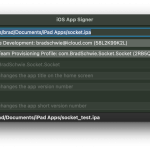My replacement Rohloff 8201 grip shifter is still fully intact thanks to Liam and Hewitt from the University of Minnesota’s Mechanical Engineering 3D Printing Lab. Since building up my Surly Pugsley four years ago, I’ve noticed that the shifting seemed really stiff compared to my also Rohloff-equipped Surly Big Dummy. I’m embarrassed to report that it took until today to resolve the sticky shifting. It was a busy last several months, where I mostly neglected all but essential bike maintenance with Viola staying with us – we still miss her!
From the moment I completed the Pugsley build I noticed stiff shifting and assumed it was because of more complex cable routing that was required by the Pugsley’s horizontal drop outs and rear mounts, this was a false assumption. After left knee surgery in December, I was house-bound and corrected the cable routing, which only slightly improved the sticky shifting, but there was still room for significant gains. While correcting the cable routing, I figured out my previous assumption error when I tested the moment of the Pugsley’s Rohloff compared to the moment of the Big Dummy’s Rohloff – about the same force was required to shift each – testing was conducted using a wrench at the Rohloff’s gear box that precluded any shift cables.
I was relieved to know the problem wasn’t the Pugsley’s Rohloff, so I began to work upstream. When the Pugsley’s cable pulley was detached from the rear mech the grip shifter slid mostly smooth, but the minute the cable pulley was reattached to the Rohloff’s rear mech the shifter was difficult to turn on the handle bars. Only after I applied silicone compound (lubrication) to the inside of the Rohloff’s grip shifter housing did the shifting become as smooth as the Big Dummy’s Rohloff. I’m so relieved to have finally resolved this.
Last note… I used AGS Silicone Compound for the grip shifter’s lubrication, because chatter online indicates it will be compatible with PLA (what the 8201 grip shifter is now made of). I’ll post updates here. Should the Silicone Compound weather poorly, I will consider switching to a lithium grease.

